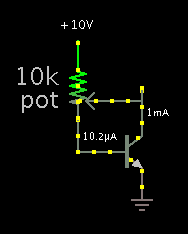ivenzar
Member level 2
Hello,
I need a bjt transistor which provides a stable voltage drop on the pn junction. Voltage drop must be stable against temperature, vce and ic. Vce voltages will be lower than 10 volts and ic is less than 1mA.
Bjt voltage drop will be used as voltage reference for current limiting, so NPN or PNP options are available.
Thanks
I need a bjt transistor which provides a stable voltage drop on the pn junction. Voltage drop must be stable against temperature, vce and ic. Vce voltages will be lower than 10 volts and ic is less than 1mA.
Bjt voltage drop will be used as voltage reference for current limiting, so NPN or PNP options are available.
Thanks
